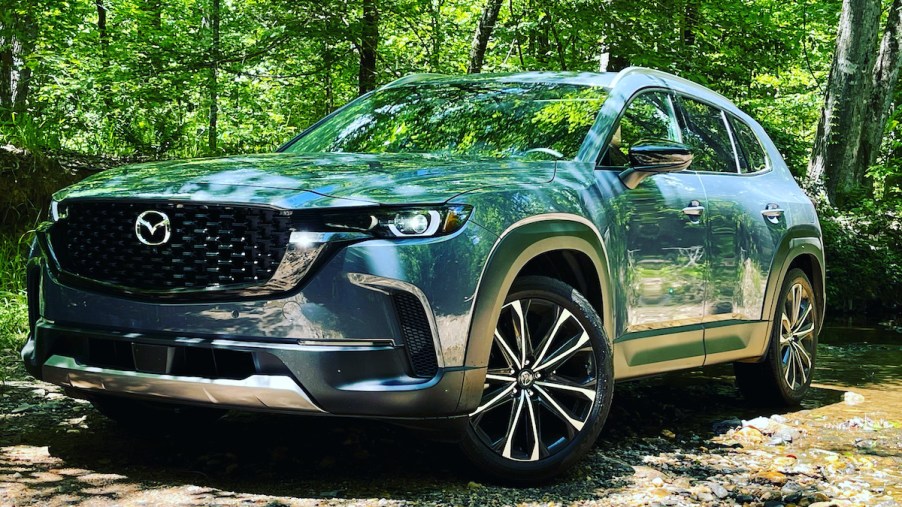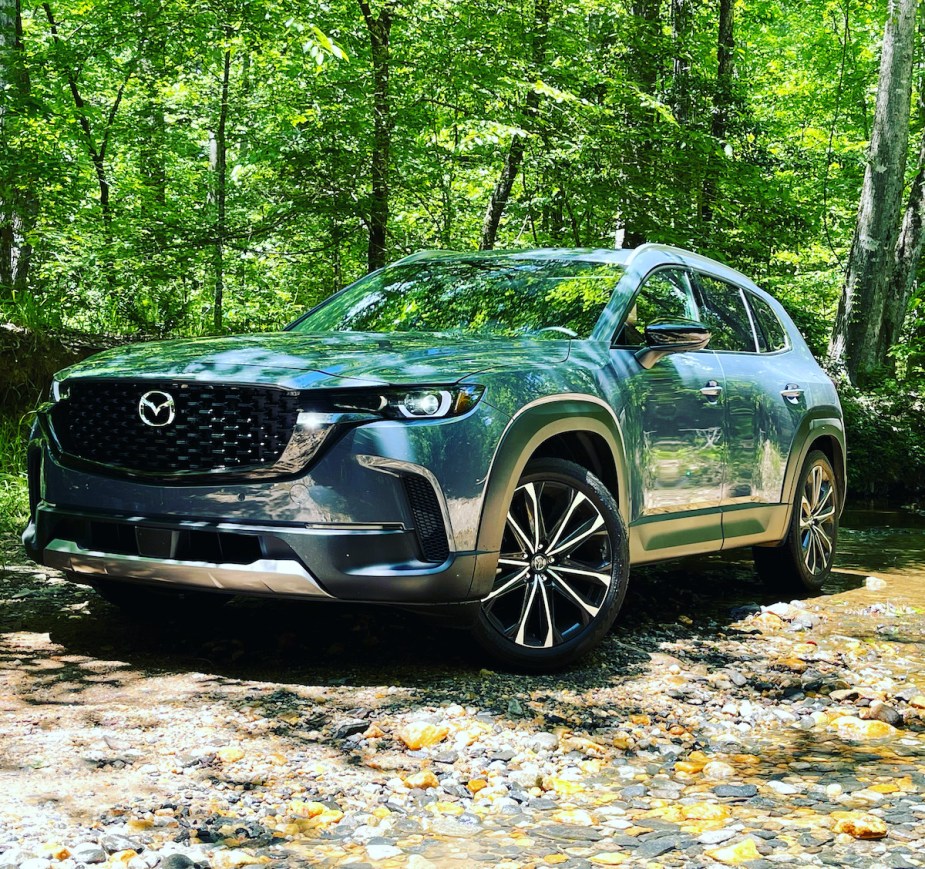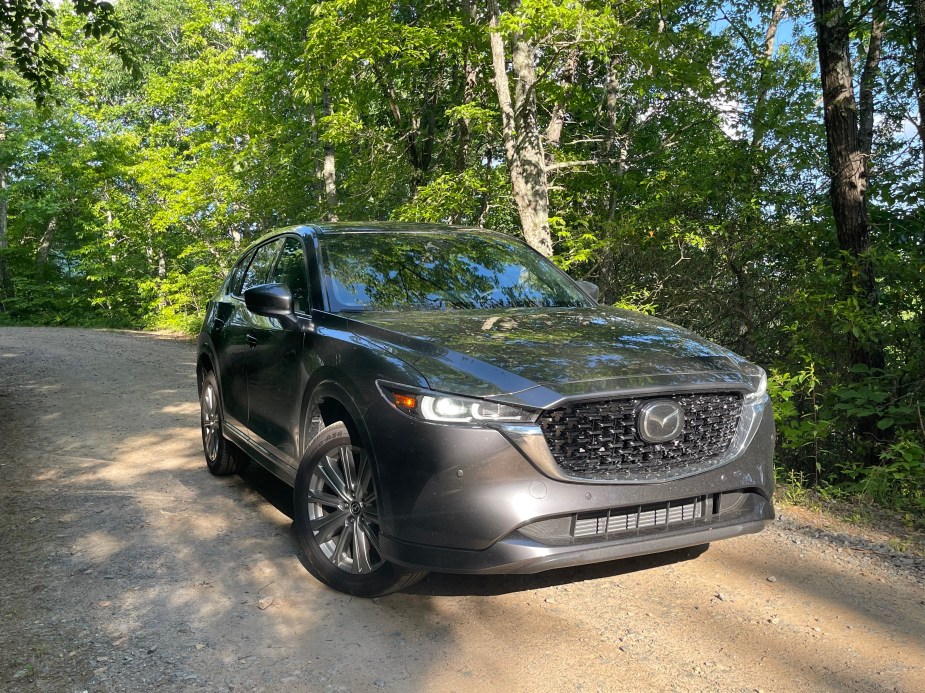
The Mazda CX-50 More Capable Than the Mazda CX-5
After spending time behind both wheels, it’s time to break down the differences between the Mazda CX-50 and the Mazda CX-5. The 2023 Mazda CX-50 and 2022 Mazda CX-5 both have off-roading modes, but the CX-50 takes adventuring to the next level.
2023 Mazda CX-50 vs. 2022 Mazda CX-5

Welcome the new 2023 Mazda CX-50 to town. It’s pretty similar to the Mazda CX-5 but has a few beefier upgrades for off-roading. Both SUVs offer an off-road mode and have standard all-wheel drive, but the CX-50 has a more intelligent system.
For starters, the Mazda CX-50 rides on Mazda’s latest small platform like the CX-30 and Mazda3, but it’s wider and longer than those vehicles. So, Mazda developed the suspension to be strong enough to handle rough terrain while accommodating for the additional weight.
It is uniquely tuned to handle more significant driving inputs often required by off-roading. Plus, the CX-50 features a larger torque coupling than the Mazda CX-5 to support its enhanced off-roading capabilities.
What are the CX-50’s advantages?
With the 2023 Mazda CX-50, the Mazda Intelligent Drive Select (MI-Drive) system and G-Vectoring control systems respond to different driving modes and situations to provide optimal settings for each obstacle.
More torque is sent to the front wheels on slippery surfaces to bite down more. The wheels are set to go at the same speeds to create yaw damping, preventing tail sliding.
The torque slips a little when climbing over inclines to delay the torque converter lockup for a smoother power delivery.
During mud and ruts or dips where a tire is off the road, the SUV tilts into the dip to place the opposite tire on the surface. Brake force is sent to the spinning tire while more torque goes to the tires on the ground.
Do the CX-50 and CX-5 feel different?

Yes, the 2023 Mazda CX-50 and 2022 CX-5 feel different on the pavement and in the wild. However, we didn’t push the CX-5 as hard on the trails. On gravel, the CX-5 feels lighter and less in control.
The 2022 Mazda CX-5 is perfectly fine for driving to campsites, and it’s well suited for inclement weather situations. But we wouldn’t take it through streams or into rutted areas.
The CX-50 feels heavier and more confident around bends, steep inclines, and on slippery surfaces. It seems less likely to fishtail around curves or spin out. Even with the traction control turned off, you can feel the suspension adjusting to prevent slipping and sliding.
As a result, the Mazda CX-50 isn’t as smooth on the pavement. The steering is heavier, and the ride is bumpier. It also has a little more wind noise than the Mazda CX-5. In Sport mode, these SUVs are both much faster.
However, in Sport mode, the CX-5 feels stiffer with more of a connection to the road than the CX-50. You can feel imperfection, which is good for assessing tire grip. When the CX-50 is in Sport mode, it feels bouncy in comparison.
Both SUVs are extremely agile and easy to park. However, the CX-5 is a little smaller, making it easier to navigate through tight city areas. They get about the same fuel economy, but the CX-50 gets about one mpg less than the CX-5.
The CX-50 and CX-5 currently have the same engines and could go hybrid. The CX-50 has an 8.6-inch ground clearance, and the CX-5 sits at 7.5-inches.
The Mazda CX-50 feels like a much sportier and beefier version of the Mazda CX-5, and we love the extra cargo space. The Mazda CX-5 still has AWD and offers a smoother ride and a sportier performance.



